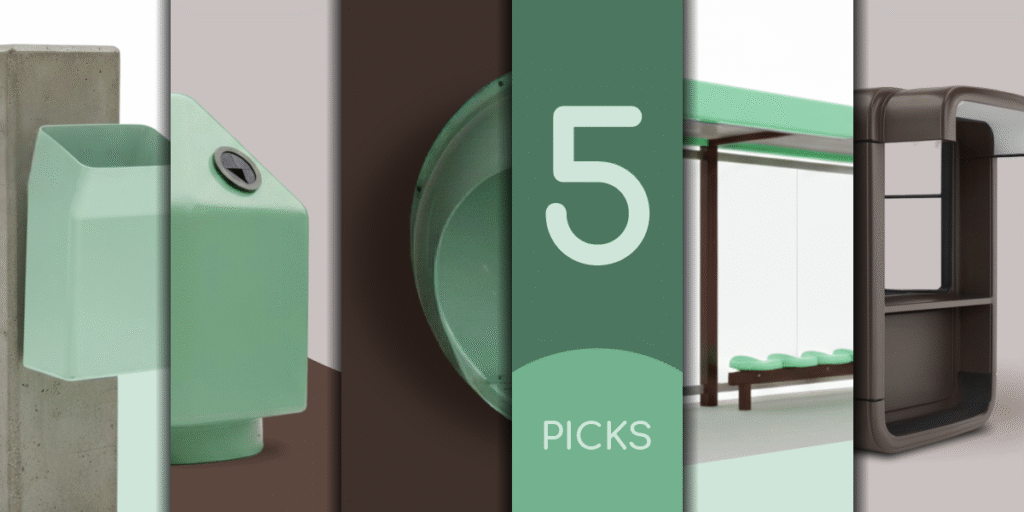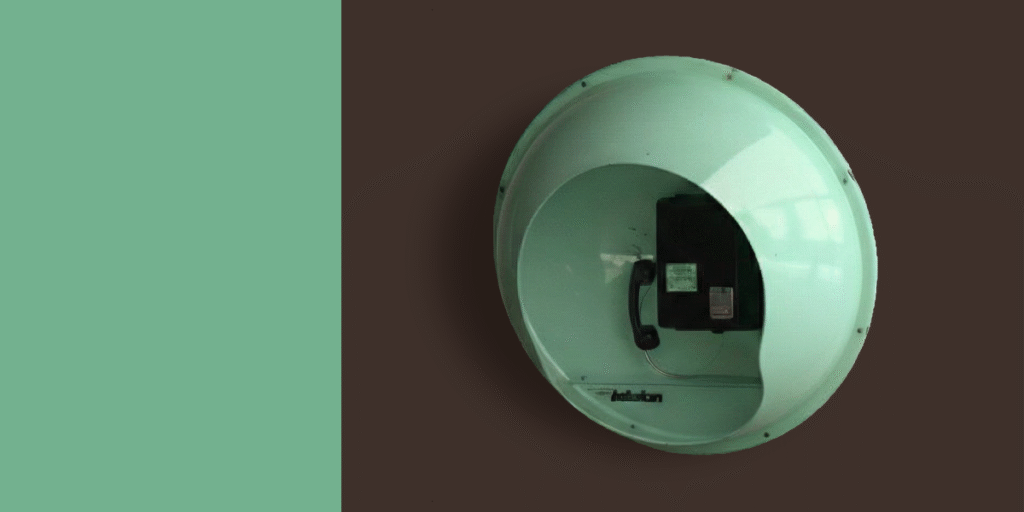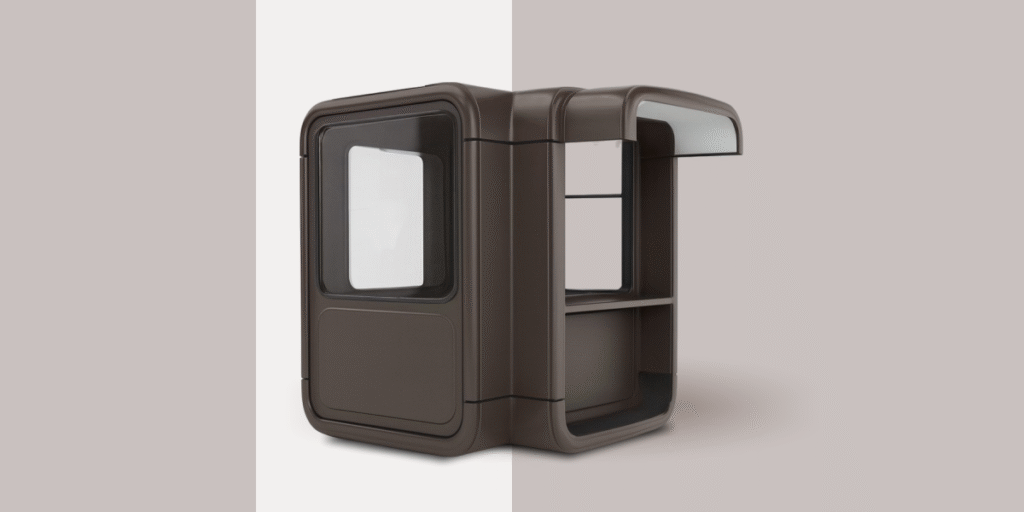From kiosks to bus stops, Saša Mächtig showed how modular thinking could transform urban life. His work combined flexibility, durability and a clear modernist language. Each design stands as proof that when form follows function, even the simplest objects can become timeless icons.

1 Frog Trash Bin
Saša Mächtig extended his modular thinking to the smallest details of urban life. His fiberglass trash bin, known as the “Frog,” was designed for durability, easy cleaning and simple reproduction. Rounded shapes and clear proportions gave it a sense of order that went beyond pure utility.
Mounted on a concrete slab or attached to walls and street lamps, the Frog appeared in parks, streets and public squares, becoming a quiet but constant presence. It showed how good design can elevate even the most ordinary elements of everyday life.

2 Useful Waste Containers (EKOS)
Alongside the small Frog bins, Saša Mächtig also designed large modular recycling containers known as “EKOS.” Made from fiberglass segments, they were intended for sorting paper, glass and other materials at a time when organized recycling was still uncommon.
The containers balanced size and simplicity, offering enough volume for urban use while remaining easy to produce and maintain. Their bright colors and clear forms made them visible in the public space, turning waste separation into part of the everyday environment.

3 Telephone Booth
In the 1970s, Saša Mächtig applied his modular approach to public telephone booths. Built from fiberglass shells, they offered protection from weather while remaining lightweight and easy to install. Their clear proportions and smooth surfaces gave them a modern presence in the urban landscape.
The booth was designed to isolate the caller and suppress surrounding noise, turning a busy street into a temporary private space. More than a piece of equipment, it reflected Mächtig’s vision of infrastructure that combined practicality with thoughtful design.

4 Euromodul Bus Station
Saša Mächtig carried his modular principles into public transport with the Euromodul bus station system. Built from fiberglass panels and steel supports, the shelters were lightweight, robust and easy to assemble in different urban settings.
The design featured a flat canopy and modular side elements, allowing variations in size and layout. Functional yet carefully proportioned, they gave even a routine waiting space a clear and modern character.
Euromodul showed how modular design could scale up from small objects to structures that shaped the daily rhythm of urban movement.

5 K67 Kiosk
Introduced in 1967, the K67 kiosk is Saša Mächtig’s most recognized work. Fiberglass modules could be joined, extended or adapted to urban needs. Newsstands, flower shops and snack bars across Europe adopted its colorful shells, giving streets a modern rhythm.
The K67 proved modular design can be practical and inviting. Lightweight yet durable, it blurred the line between infrastructure and design objects. Today it stands as an icon of 20th-century urban design.
Read more in our full article K67 Kiosk: Modular Design for the People.
